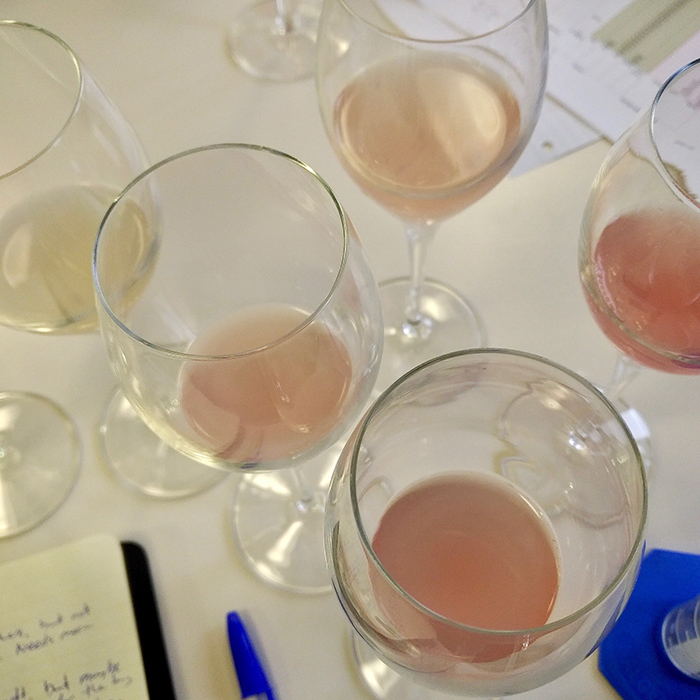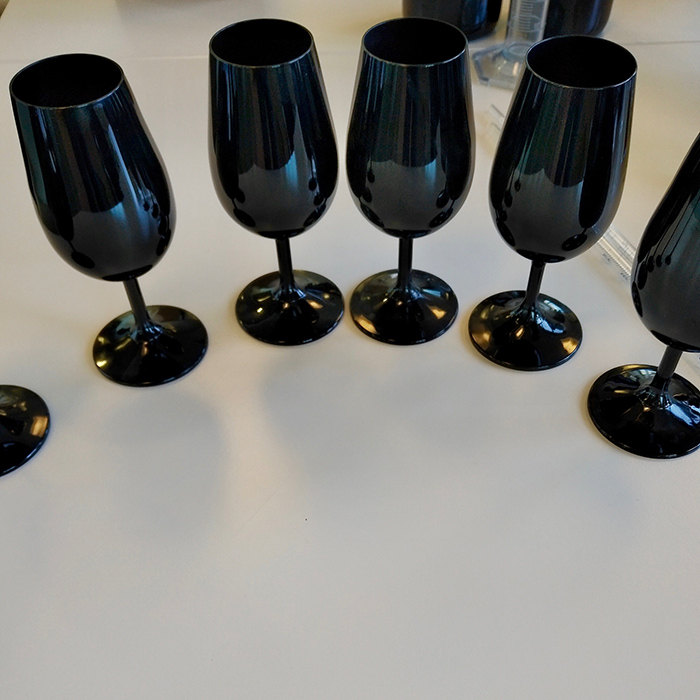Notes from the vineyard: blending
Author: Guest Blogger

Blending Nyetimber’s 2017 base wines
Blending is a fascinating and exciting process, one where the wines literally come to life. It’s cliché to talk about this as creating a whole greater than the sum of its parts, but I believe the expression fully applies when it comes to putting base wines together for sparkling. Particularly when working with Chardonnay, Pinot Noir and Meunier, each variety complements the others, and there is a synergy that makes it clear why they are such a successful trio of grapes for top quality sparkling wines.
Regarding the blending process, from the base wine tastings that we carry out in January, Cherie Spriggs and I assemble trial versions of our various wines (Classic Cuvée, Rosé, Blanc de Blancs et al). These are small versions of the blends – approximately 500 millilitres each and therefore on occasion only a few millilitres are coming from one tank. Our first attempt at the blends is an educated guess based on experience with our vineyard blocks, as well as the style and quality of the individual base wines as revealed in the January tastings. After assessing the first trial blends, we then make refinements according to what the wines need, and our ‘catalogue’ of base wines available. For example, if we want to work on the acidity profile, or the fruit presence of a blend, we can look back at the wines available and the components of the blends to adjust proportions accordingly, or substitute their individual parts. It is these moments that make the hard work, investment and dedication towards keeping our vineyard parcels separate throughout harvest and fermentation, worthwhile.

Black glasses, used for blind tasting during the blending process
An extra layer of interest also exists when blending our multi-vintage wines (Classic Cuvée, Rosé and Demi-Sec). For these wines we draw upon our collection of reserve wines to add depth to the blend. Using ‘CC’ as an example, reserves can comprise up to a third of the blend. The reserve wines in our collection represent 3-5 of the most recent vintages. Our approach with using reserves is that they should bring complexity but not dominance to a wine – hence not pushing the ageing of our reserves too far. And of course, each year during the blending process we have to allocate some base wines to become reserves for future years. To be considered for allocation as a reserve wine, the base wines need to be balanced, and with great ageing potential, because after a few years in tank, they of course need to age a further few years in bottle before release.
Once Cherie and I approach what seems to be the final versions of the blends we make one final check of the wines by tasting them in black glasses. If you’ve not tried this sort of tasting, I highly recommend it. Black glasses can be used for ‘blind’ tastings, where it’s impossible to distinguish the colour of the wine one is tasting. We use this as a way to confirm that each of the blends is stylistically distinct, without the help of visual cues. For example, can we identify the Rosé by aroma and taste alone, without seeing the colour? Is the Blanc de Blancs recognisable and can we spot the distinctive and alluring floral and berry aromas of the Tillington vineyard? The result of working this way is that our wines end up with distinct styles.
Next month will be the final entry in my “Notes from the vineyard” series, where I’ll be discussing the preparation for bottling of these 2017 wines. From then, it won’t be long until budburst is upon us, and the 2018 growing season is underway… And so the cycle repeats.


